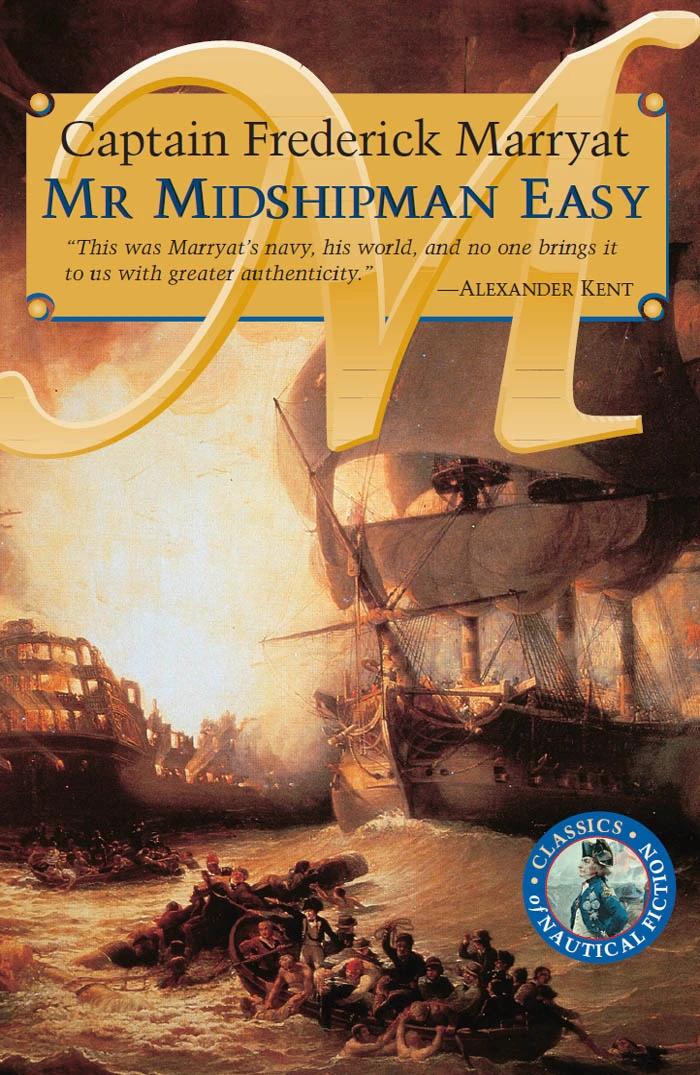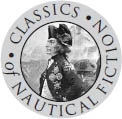Mr Midshipman Easy Read Online
1 Acquisitiveness |
22 Hope |
2 Agreeableness |
23 Human Nature |
3 Alimentiveness |
24 Ideality |
4 Amativeness |
25 Imitation |
5 Benevolence |
26 Individuality |
6 Approbativeness |
27 Inhibitiveness |
7 Calculation |
28 Language |
8 Cautiousness |
29 Locality |
9 Color |
30 Mirthfulness |
10 Continuity |
31 Order |
11 Combativeness |
32 Parental Love |
12 Conscientiousness |
33 Secretiveness |
13 Conjugality |
34 Self-Esteem |
14 Constructiveness |
35 Size |
15 Causality |
36 Sublimity |
16 Comparison |
37 Spirituality |
17 Destructiveness |
38 Time |
18 Eventuality |
39 Tune |
19 Firmness |
40 Veneration |
20 Form |
41 Vitality |
21 Friendship |
42 Weight |
MR MIDSHIPMAN EASY
by
Captain Frederick Marryat
CLASSICS OF NAUTICAL FICTION SERIES
McBOOKS PRESS, INC
ITHACA, NEW YORK
Copyright © 1998 by McBooks Press
All rights reserved, including the right to reproduce this book or any portion thereof in any form or by any means, electronic or mechanical, without the written permission of the publisher. Requests for such permissions should be addressed to: McBooks Press, Inc., I.D. Booth Building, 520 North Meadow Street, Ithaca, NY 14850.
Book and cover design by Paperwork.
Cover painting is a detail from Battle of the Nile by P. J. de Loutherbourg, 1798.
Courtesy of Peter Newark’s Military Pictures.
Edited by Patricia Zafiriadis. Glossary by Alexander G. Skutt.
Library of Congress Cataloging-in-Publication Data
Marryat, Frederick, 1792-1848.
Mr. Midshipman Easy / Frederick Marryat.
p. cm. — (Classics of nautical fiction series; no. 2)
ISBN 0-935526-40-4 (paperback)
1. Napoleonic Wars, 1800-1815—Fiction. 2. Great Britain—History, Naval
—19th century—Fiction. I. Title. II. Series.
PR4977.M7 1997
823’.7—dc21
97-15354
CIP
Mr Midshipman Easy was first published in 1836. This text is based on the 1896 edition of The Novels of Captain Marryat edited by R. Brimley Johnson and published by J.M. Dent and Co. in London and Little, Brown and Co. in Boston. Corrections were made for consistency and clarity, but most of the original spelling and punctuation remain intact.
All McBooks Press publications can be ordered by calling toll-free
1-888-BOOKS11 (1-888-266-5711). Please call to request a free catalog.
Visit the McBooks Press website at www.mcbooks.com.
Printed in the United States of America
9 8 7 6 5 4 3
CONTENTS
PREFACE
ENGLAND’S greatness as a world power in the sixteenth through nineteenth centuries was based on her nautical might. The Royal Navy and the merchant fleet were the tools that built and maintained the British Empire.
England fought wars against the Spanish, the Dutch, and other European powers, forming and breaking alliances, but its epic military struggle was against France. For more than 125 years, from 1689 to 1815, England and France waged a series of wars. This almost ceaseless conflict was the first to attain a truly global scale. A tale of enmity that often involved other nations, its “chapters” bear names such as the Nine Years War, the War of the Spanish Succession, the War of the Austrian Succession, the Seven Years War (the American subchapter was called the French and Indian War), the War of American Independence, and the Napoleonic Wars.
Safe at home, the British citizenry eagerly read the newspapers and broadsheets that described the numerous naval campaigns and battles. Noble sea captains and brave sailors were celebrated in stories and popular songs.





1 comment